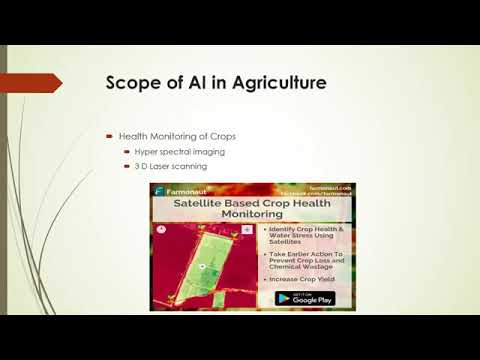Funding Crisis in Washington: How Federal Cuts Impact University Research and Scientific Innovation
“Federal budget cuts have led to a 20% decrease in university research funding over the past 5 years.”
In recent years, we’ve witnessed a troubling trend that threatens the very foundation of scientific progress in the United States. University research funding cuts are sending shockwaves through the scientific community, impacting federal budgets for science and creating uncertainty in graduate program admissions. As we delve into this critical issue, we’ll explore the far-reaching consequences of reduced support for research institutions and the challenges faced by young scientists in this evolving landscape.

The Ripple Effect of Federal Budget Cuts on Science
The impact of federal budget cuts on science is far-reaching and multifaceted. These cuts have led to:
- Reduced funding for critical research projects
- Uncertainty in graduate program admissions
- Decreased job opportunities for young scientists
- Potential loss of US research competitiveness on the global stage
As we navigate this challenging landscape, it’s crucial to understand the various aspects of this funding crisis and its implications for the future of scientific innovation in the United States.
NIH Funding Challenges: A Case Study in Research Disruption
The National Institutes of Health (NIH) has long been a cornerstone of biomedical research in the United States. However, recent funding challenges have severely impacted its ability to support groundbreaking studies and nurture the next generation of scientists.
“NIH funding challenges have resulted in a 15% reduction in neuroscience research projects at major universities.”
This reduction in neuroscience research projects is just one example of how funding cuts are affecting specific fields. The impact extends to various areas of study, including:
- Cancer research
- Infectious disease prevention
- Mental health studies
- Rare disease investigations
These cuts not only slow down the pace of scientific discovery but also potentially delay life-saving treatments and interventions.
The Struggle of Young Scientists: Career Prospects in Academia
For many aspiring scientists, the path to a career in academia has become increasingly uncertain. The reduction in university research funding has led to:
- Fewer available positions for postdoctoral researchers
- Increased competition for limited grant funding
- Delayed career progression for early-career scientists
- A potential “brain drain” as talented researchers seek opportunities abroad
This situation is particularly concerning as it may discourage bright minds from pursuing careers in science, potentially stunting innovation and progress for years to come.
US Research Competitiveness: A Global Perspective
The United States has long been a leader in scientific research and innovation. However, the current funding crisis threatens to erode this position. We’re seeing:
- Increased investment in research by other countries, particularly China
- A potential loss of international collaborations due to funding uncertainties
- Decreased ability to attract top international talent to US institutions
- Reduced capacity to address global challenges such as climate change and pandemics
Maintaining US research competitiveness is crucial not only for scientific progress but also for economic growth and national security.
International Student Recruitment: Challenges and Opportunities
The funding crisis has also impacted international student recruitment, a vital component of the US higher education system. We’re observing:
- Decreased funding for international student scholarships and research assistantships
- Uncertainty regarding visa policies and post-graduation work opportunities
- Increased competition from other countries offering more stable funding environments
- Potential loss of diverse perspectives and talents in research teams
Addressing these challenges is crucial for maintaining the rich, diverse research environment that has been a hallmark of US universities.

Science Funding Policy Changes: Navigating the New Landscape
Recent science funding policy changes have created a complex and often challenging environment for researchers and institutions. Key aspects include:
- Shifts in funding priorities across different scientific disciplines
- Changes in grant application and review processes
- Increased emphasis on short-term, applied research over long-term, basic science
- New requirements for demonstrating broader impacts and commercial potential
Adapting to these changes requires flexibility and strategic planning from both individual researchers and research institutions.
Agriculture and Water Security Research: Critical Fields Under Pressure
Among the many areas affected by funding cuts, agriculture and water security research stand out as particularly critical given their importance to food security and environmental sustainability. The impacts include:
- Reduced funding for long-term agricultural studies
- Delays in developing drought-resistant crops and sustainable farming practices
- Decreased capacity to address emerging water scarcity issues
- Limited resources for studying the impacts of climate change on agriculture
These cuts could have far-reaching consequences for global food production and water management strategies.
Diversity in Academic Research: Progress at Risk
Efforts to improve diversity, equity, and inclusion in academic research have made significant strides in recent years. However, funding cuts threaten this progress. We’re seeing:
- Reduced funding for diversity initiatives and mentorship programs
- Increased financial barriers for underrepresented groups entering research careers
- Potential loss of diverse perspectives in scientific problem-solving
- Challenges in maintaining inclusive research environments with limited resources
Preserving and advancing diversity in academic research is crucial for fostering innovation and addressing a wide range of societal challenges.
The Role of Technology in Mitigating Funding Challenges
While the funding crisis presents significant challenges, technological advancements offer some potential solutions. For instance, platforms like Farmonaut are revolutionizing agricultural research and practice by leveraging satellite technology and AI. Such innovations can help stretch limited research budgets further by:
- Providing cost-effective data collection and analysis tools
- Enabling remote collaboration and resource sharing
- Streamlining research processes and improving efficiency
- Offering new avenues for public-private partnerships in research
Researchers and institutions can explore these technological solutions to maximize the impact of available funding.
Comparative Analysis: Funding Cuts Across Research Sectors
| Research Sector | Estimated Funding Reduction (%) | Key Areas Affected | Potential Long-term Consequences |
|---|---|---|---|
| Neuroscience | 15% | Brain mapping projects, Alzheimer’s research | Delayed advancements in understanding neurological disorders |
| Agriculture | 18% | Crop resilience studies, sustainable farming practices | Reduced food security, slower adaptation to climate change |
| Water Security | 20% | Water purification technologies, drought management | Increased water scarcity, environmental degradation |
| Climate Science | 25% | Long-term climate modeling, emissions reduction strategies | Inadequate preparation for climate-related challenges |
| Infectious Diseases | 12% | Vaccine development, epidemiological studies | Reduced ability to respond to future pandemics |
This table illustrates the varying impacts of funding cuts across different research sectors, highlighting the need for a balanced approach to research funding that considers the long-term implications for each field.
Strategies for Researchers and Institutions
In light of these funding challenges, researchers and institutions are developing strategies to adapt and thrive. Some approaches include:
- Diversifying funding sources, including exploring private sector partnerships
- Emphasizing interdisciplinary research to leverage resources across departments
- Focusing on high-impact, cost-effective research projects
- Investing in technology and infrastructure that improves research efficiency
- Developing international collaborations to pool resources and expertise
By implementing these strategies, the research community can work to mitigate the impact of funding cuts and continue to drive scientific progress.
The Future of Scientific Innovation: Challenges and Opportunities
As we look to the future, the landscape of scientific innovation in the United States faces both challenges and opportunities. The funding crisis has undoubtedly created obstacles, but it has also spurred creative thinking and new approaches to research and collaboration.
Key areas to watch include:
- The evolution of public-private partnerships in research funding
- The role of citizen science and crowdfunding in supporting research projects
- The impact of emerging technologies like AI and quantum computing on research methodologies
- The potential for new international collaborations and global research initiatives
By addressing the current challenges head-on and embracing new opportunities, the scientific community can work to ensure that the United States remains at the forefront of global innovation.
Conclusion: A Call to Action
The funding crisis in Washington and its impact on university research and scientific innovation is a complex issue with far-reaching consequences. As we’ve explored throughout this blog, the effects range from immediate disruptions to research projects to long-term implications for US competitiveness and global scientific leadership.
It’s crucial that policymakers, researchers, and the public work together to address these challenges. This may involve:
- Advocating for increased and stable federal funding for scientific research
- Developing new models for research funding and collaboration
- Investing in STEM education to nurture the next generation of scientists
- Promoting public understanding of the importance of scientific research
By taking action now, we can help ensure that the United States continues to be a global leader in scientific innovation, driving progress and addressing the world’s most pressing challenges.
FAQ Section
Q: How are university research funding cuts affecting graduate students?
A: Funding cuts are leading to reduced admissions in graduate programs, fewer research assistantships, and increased competition for limited resources. This creates uncertainty for students and may delay or derail career plans in academia.
Q: What are the long-term consequences of reduced funding for basic science research?
A: Reduced funding for basic science can slow the pace of fundamental discoveries, potentially delaying breakthroughs in areas like medicine, technology, and environmental science. This could impact the US’s global competitiveness in scientific innovation.
Q: How are funding cuts affecting diversity in academic research?
A: Funding cuts often disproportionately affect programs aimed at increasing diversity in science. This can lead to reduced opportunities for underrepresented groups and slow progress in creating more inclusive research environments.
Q: What can individual researchers do to adapt to the current funding climate?
A: Researchers can diversify their funding sources, collaborate across disciplines, focus on high-impact projects, and utilize cost-effective technologies like those offered by platforms such as Farmonaut to maximize their research potential.
Q: How might the funding crisis impact international collaborations in scientific research?
A: The funding crisis may lead to fewer resources for international partnerships and make it more challenging to attract international talent. However, it may also spur new forms of global collaboration as researchers seek to pool resources and expertise.
Explore Innovative Solutions with Farmonaut
While the funding crisis presents significant challenges, innovative technologies can help researchers maximize their resources and impact. Farmonaut offers cutting-edge solutions for agricultural research and practice, leveraging satellite technology and AI to provide valuable insights.
Explore Farmonaut’s offerings:
- API Access for integrating satellite and weather data into your research projects
- API Developer Docs for seamless implementation
Download the Farmonaut app:
Earn With Farmonaut: Affiliate Program
Earn 20% recurring commission with Farmonaut’s affiliate program by sharing your promo code and helping farmers save 10%. Onboard 10 Elite farmers monthly to earn a minimum of $148,000 annually—start now and grow your income!
Farmonaut Subscriptions
By leveraging innovative technologies and exploring new funding models, researchers can continue to drive scientific progress even in challenging times. Together, we can work towards a future where scientific innovation thrives, benefiting society as a whole.




















